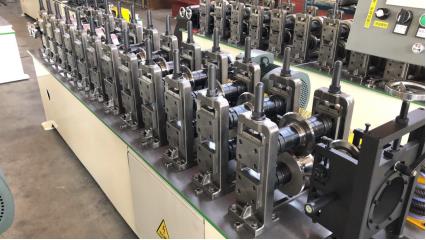
The Evolution and Importance of Corrugated Metal Machines
Corrugated metal has become a pivotal material in various industries, thanks to its lightweight yet robust structure. The production of corrugated metal sheets is facilitated by a specialized piece of equipment known as the corrugated metal machine. This technology has undergone significant advancements, leading to enhanced efficiency, precision, and versatility in manufacturing processes.
What is a Corrugated Metal Machine?
A corrugated metal machine is an advanced piece of industrial equipment designed to create sheets of metal that are wavy in texture, providing both strength and flexibility. These machines can process various types of metal, including steel, aluminum, and zinc-coated materials. The primary function of the machine is to produce corrugated sheets through a series of mechanical processes, including feeding, shaping, and cutting the metal.
The Manufacturing Process
The operation of a corrugated metal machine typically involves several stages. Initially, metal coils are fed into the machine, where they are unrolled and continuously supplied for processing. The metal passes through rollers that form the characteristic corrugated shapes. The design of the rollers can be adjusted to produce various profiles, making the machines highly adaptable to meet market demands.
Once shaped, the metal is cut to specific lengths and often subjected to additional processes like coating or painting. This not only enhances its aesthetic appeal but also increases its resistance to environmental factors, making corrugated metal suitable for various applications, including roofing, siding, and packaging.
Advantages of Using Corrugated Metal

One of the primary benefits of corrugated metal is its lightweight nature, which simplifies transportation and installation. Despite being lightweight, the corrugated design lends added strength, allowing it to withstand harsh weather conditions. This resilience makes corrugated metal particularly popular in construction applications, where durability is paramount.
Additionally, corrugated metal is often viewed as an environmentally friendly choice. It is 100% recyclable and can be produced from recycled materials, contributing to sustainability in the manufacturing sector. Moreover, the energy efficiency of corrugated metal buildings can lead to reduced heating and cooling costs, making it an economically wise decision for many businesses.
Innovations in Corrugated Metal Machine Technology
The corrugated metal industry has witnessed numerous technological innovations in recent years. Automated systems that integrate advanced controls and sensors have emerged, enhancing the precision and speed of production. These smart machines can adjust settings in real time, optimizing the manufacturing process and reducing waste.
Furthermore, computer numerically controlled (CNC) machines have revolutionized the way corrugated sheets are manufactured. CNC technology allows for intricate designs and specifications to be executed with high precision, catering to specific customer needs. This level of customization was previously unattainable with traditional machinery.
Applications Across Industries
The applications of corrugated metal are vast and varied. In the construction industry, it is commonly used for roofing and wall panels due to its combination of strength and lightness. In agriculture, corrugated metal is utilized for building storage facilities and animal shelters. Additionally, it plays a crucial role in packaging, providing a durable and lightweight solution for shipping goods.
In conclusion, corrugated metal machines have transformed the way metal sheets are produced, leading to innovations that enhance efficiency and adaptability. As industries continue to seek sustainable and durable materials, the role of corrugated metal and the machinery that manufactures it will undoubtedly grow, making it an integral part of the modern manufacturing landscape. The ongoing advancements in technology promise a bright future for both manufacturers and consumers alike, ensuring that corrugated metal remains a vital resource across various sectors.